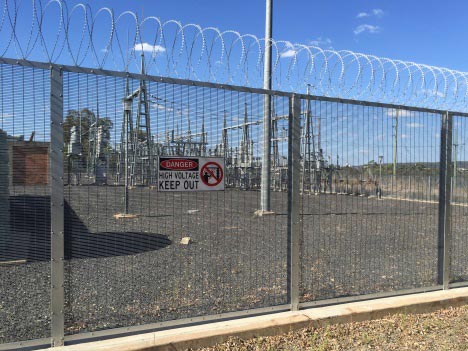You see palisade fences on government institutions, airports, seaports, utility companies, and even correctional facilities. While only a few attempted to breach the protective barrier, it begs the question: are they as secure as they are billed to be?
What is a Palisade Fence?
A palisade fence is a sturdy perimeter barrier consisting of steel pales arranged vertically and secured to horizontal steel girders. The plates are attached to support posts using anti-tamper bolts. Typically, the barrier’s pale design is straight. However, you can choose a curved top for added security.
You can pick the thickness of the pale from 3mm, 2.5mm, or 2mm. You can choose a triple point, flat top, or single point for the steel pales. As to the grade, you have:
? British Standard Security Purpose: It pertains to the standards concerning anti-intrusion barriers. All the security companies worldwide refer to these guidelines to assess the effectiveness of the perimeter fence. When the fence is British Standard BS1722-12:2006-certified, you can guarantee that it exceeds all the benchmarks for security fences.
? Commercial Grade: The commercial grade palisade is levels above your average residential fence in terms of sturdiness, thickness, and construction. There’s no standard guideline since each manufacturer has its approach. Look for the British Standard when choosing a commercial-grade fence.
? General Purpose: General purpose fences are ideal for residential dwellings or facilities that do not require high security. This type of perimeter fence is more affordable since the pales are thinner.
You can customise the this type of fence if you work with a manufacturer with its in-house facility and rolling beds to produce as many as 800 straight pales daily.
Palisade fences are ideally installed on the following facilities:
? Government installations
? Depos and utilities
? Factories and warehouses
? Mining facilities
? Embassies
? Railways
? Stabling yards
? Junkyards
? Schools
In some instances, these facilities also install razorwire fences, which look as they sound.
Also called barbed wire fence, razorwire features concertina wires or galvanised steel blades that coil on top of the barrier surrounding the perimeter. It’s different from your average razorwire designed to ward off small critters. Concertina’s sharp edges alone would cut deep into the flesh, which may be fatal sometimes.
The Nuts and Bolts of Palisade Fences
High-security palisade perimeter barriers do not have average nuts and bolts installed on your average residential fences.
The average fence contains ordinary bolts that anyone can remove with a run-of-the-mill wrench. However, some maximum security razorwire are fitted with anti-tamper breakaway nuts. So if someone starts to torque the head, it will immediately snap off.
Sometimes, these steel barriers also contain bolt heads that require special removal tools. The manufacturer can also use a countersunk head bolt or strip the bolt’s thread, making it impossible to screw it free.
How Tall Are High-Security Palisade Fences?
The height for commercial grade fences must not be less than two metres tall (around 6.5 feet). However, the standard measurement for correctional facilities in Australia and New Zealand is five metres or about 16 feet, as outlined in the 1990 Standard Guidelines for Prison Facilities.
So, you have a wide range of options in height between six feet and 16 feet when looking to install your fence.
The height of the fence will determine the thickness of the pales. The higher the wall, the thicker the vertical pales, which makes them resistant to cutting and bending. For example, the pales for the prison fence will be at least 3mm thick.
With that said, these fences are not slice-proof because someone with the right tools, such as an acetylene torch, will cut through the steel like butter.
But at least they will buy you some time for your CCTV or security guards to prevent the breach.
Security Threat Assessment
What makes high-security fences different is the amount of preparation needed before installation. In contrast, your average fence requires only some measurements around your perimeter after you picked the design from the brochure.
The risk assessment analysis will determine the types of threats your facility faces and the possible breaches in security. For example, the fence construction will depend on whether you wish to keep people in or ward off threats. In some instances, the fence serves both purposes, such as a prison.
You also have to determine if there were prior breaches and the frequency of the infringements. Once the manufacturer has installed the perimeter barrier, they will conduct another risk assessment to know if the goals are met.
The palisade or razorwire is the solution to your maximum security needs. They are designed to resist tampering to ward off malicious actors. To reinforce the barrier, you can ask for extra-strengthening pales or anti-ram fences that are crash-rated to withstand high-velocity attacks. Finally, you can also choose to customise your steel wall by making it more “smart.” For instance, you can install CCTVs, biometric access, keypad IDs, and other access controls.





